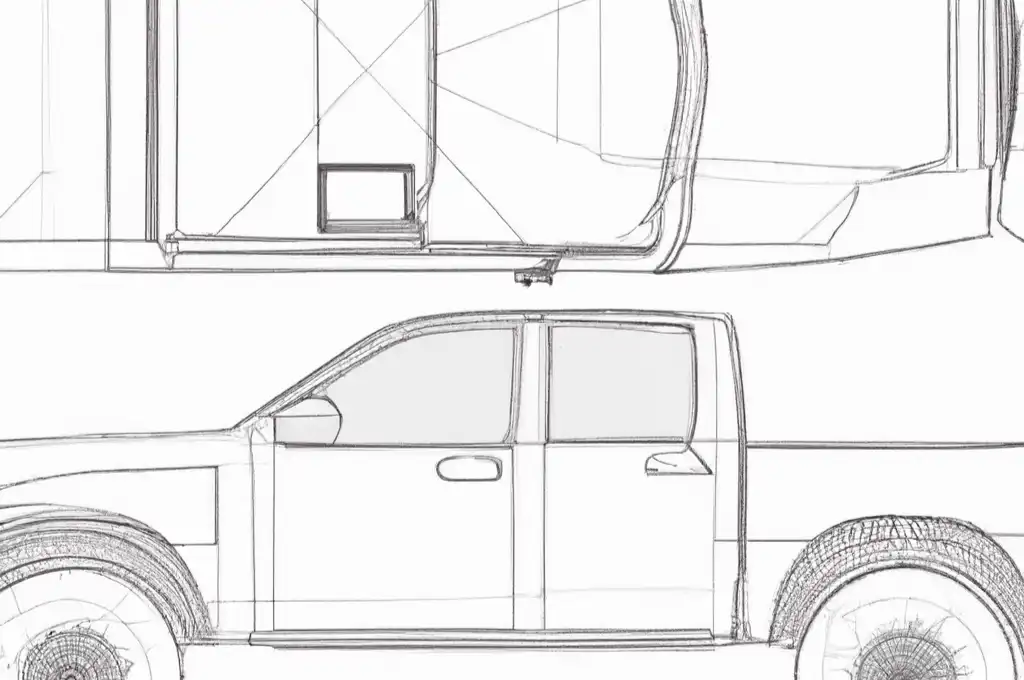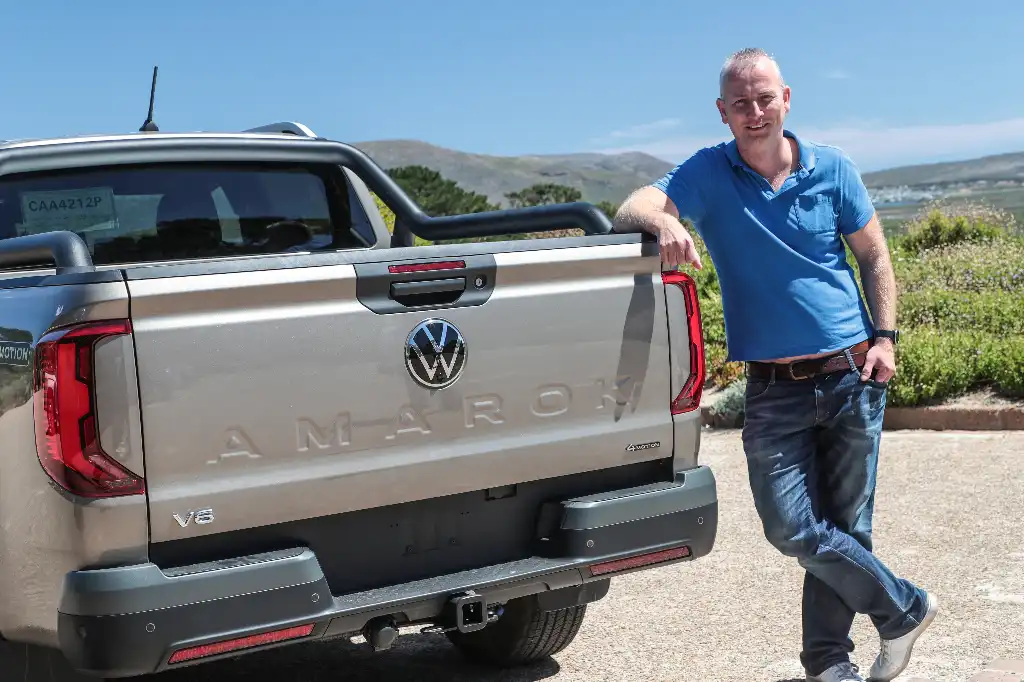
Much has been speculated about the strategic alliance between Ford and Volkswagen but aside from some top-level communications about the two companies’ co-operation on e-mobility, commercial vehicles and autonomous driving the reality is that we’ve had to wait for the products to be launched to really see how it works.
First came the Ford Transit Connect, based on the Volkswagen Caddy, and later this year the first of Ford’s future passenger car models utilising Volkswagen Group’s MEB platform – the basis for the ID Buzz and Volkswagen ID Buzz Cargo – will be revealed as an all-electric crossover, but the newest offspring of the alliance is in the pick-up truck segment. Like it will be for their one-tonne van, Ford is the lead development partner for pick-ups, utilising the engine, transmissions and chassis of the new Ranger for development of the Volkswagen Amarok, which returns to the sector after a three-year hiatus.
The burning question on everyone’s lips though is what are the differences between the Ford Ranger and the Volkswagen Amarok? Ford’s official answer is that the products are “fully differentiated in terms of exterior and interior design, while sharing a common platform to deliver the desired customer-facing attributes and the necessary regulatory and safety requirements” and even those closest to the project aren’t fully sure either.
“I don’t actually know,” says Petr Sulc, Amarok vehicle line director. “We are not allowed to share [with Ford] the strategy, we are not allowed to share the offer structure, we are not allowed to share what the partner is offering. What we focused on really is what you wanted to have for our new Amarok and saw what our customers need. We approached the partner and told them these are our requirements. We want to have at least a V6 in the diesel, and Ford in the past didn't have it. I don't actually know, even now, if they are now bringing it to the Ranger. We don't make any comparisons,” he explains.
The picture of how the relationship works between Ford and Volkswagen is clearly outlined by Sulc who explains it as one of supplier and customer. VW engineers worked with Ford on the specification of the vehicle they wanted and then left the Ford development team in Australia to it. That meant leaving Ford to source the parts or materials necessary to meet VW’s brief.
“We are still competitors, they don’t open the book and say we can offer this to you, it is not like this, and it is not allowed to be like this. I don’t even know if it’s right to say that we share the major parts,” Sulc continues. “We share the hard points, like the structure, so for example the structure of the seat or the angle of the opening doors. But we changed almost everything else because we designed it [Amarok] and gave our requirements.”
Those requirements, according to Sulc were based around a few key principles, aspects of the previous Amarok that VW felt needed to be maintained in the next generation. Mindful that other shared platform pick-up trucks have not ended well, Sulc says they wanted to create a pick-up that was how Volkswagen customers would want.
“We have a completely different philosophy. In the old [Amarok], if you are feeling like you’re on the sofa with the comfort this was really important for us to recreate, and also important that if our customers are changing [between] VW cars – stepping out of the Golf – and going into the Amarok the display logic is exactly the same. They don’t need to spend a lot of time to learn it. Our other priories were a V6, because without a V6 there is no interest, and the design DNA of the Amarok. We also learned from the Mercedes-Benz X-Class that it is not a good way to do only a badge of honour. This was not the way what we were going to go. It was really a hard requirement from our side, we would like to have our own Amarok.”
While VW has gone to great lengths to make the Amarok their own, underneath there are certain elements that needed to come from Ford. Electrical systems are the skeleton of a modern vehicle and the systems behind all the electrical functions are Ford’s.
However, where the consumer interacts with them, like in the touchscreen display, they have been reskinned as familiar VW systems for a similar user experience. That way necessary updates under the skin can be applied by Ford without delay, while customers get the familiarity they expect from a VW product.
A reliance on Ford systems makes sense from a technical standpoint but it does tie the Amarok into Ford’s own future plans for product development, including alternative powertrains. Volkswagen has been amongst the most proactive manufacturers in developing its MEB electric vehicle platform and access to that architecture for Ford is a major part of the reciprocal deal which will see Ford building so many of VW’s commercial vehicles.
It will mean, though, that as the lead partner, Ford will be in the hot seat for developing any electrified pick-up truck..
“We would like to offer this generation of Amarok for many years, and of course we need to apply with all the legal requirements,” Sulc said when asked about how Amarok could meet stricter Euro 7 engine regulations and the prospect of BEV versions.

“The car is technically capable of hybridisation and for full electrification, but you have to have the towing capacity and you have you have the payload. With a PHEV you need to balance these because if you bring 400kg batteries, then your payload is dropping by 400kg.
Less batteries inside, you will have more payload but the electric distance is less. This is the calibration, we are really analysing the first draft of the Euro 7 requirements and what it really means for us. Right now, we are not decided, we are seeking the right point in time for electrification, as we would like to bring all of our cars in the direction of electric up to 2035 but we will take the decision based on the Euro 7 legislation,” he explains.
Despite the enormous success of the electric Ford F-150 Lightning in the US, Ford has yet to comment on its future powertrain plans for the Ranger, however, according to Gareth Chennells, European regional product line manager for Ranger, the truck would seem ready: “Ford is the lead partner on the medium pick-up product for both brands, so is responsible for any future powertrain development including electrification. We are not able to share any specific plans for electrified products at the moment, but are confident that the Ranger will be more than capable of meeting future legislation requirements, while still delivering the product capabilities that pick-up customers demand.”
It’s possible that an Amarok/Ranger future powertrain could also be hydrogen based, although Sulc doesn’t believe it will be something to happen inside the next ten years of development, but solid state batteries are a possibility which might help solve some of the weight concerns Sulc has for a hybrid or full electric pick-up. One thing that is for certain is that he would like some for of electrification to happen sooner, rather than later.
“I personally wish to have it [an electric vehicle] as soon as possible and see that there will be demand in Europe somewhere by 2028/2030. You really have to invest a lot of money which you do not do for 2000 cars a year, but this should be the time when the BEV should come. I would not be willing to negotiate a big decrease in payload [for an EV], the range should be at least 350km to 400km and a 3.5-tonne towing capacity. It will be all-wheel-drive too. For all of this you need to have at least a 120kW battery.”
Although emphasising these are his own thoughts and not those of Volkswagen, Sulc has clearly imagined the possibility before. The sticking point, however, could be the as yet undefined Euro 7 diesel legislation. It’s possible that the development costs of future engines could be unviable even for an alliance like Ford and VW, and without enough time on sale for a sensible payback opportunity, manufacturers could forgo development altogether and plug the gap with a PHEV variant. It is here that the petrol engine in the Amarok range, currently a 2.3-litre TSI with 300hp that is to be sold in Middle East and Australasian markets, could become useful.
“[If we] will not have the E7 diesel, I can imagine a hybrid, maybe with the petrol engine. It is the easiest option. It is the logical thinking. You can start to use the PHEV has the new diesel variant if no one [meets] Euro 7,” Sulc says.
With the arrival of the new model, the future of the Amarok looks to be in good health and whether it’s done collaboratively under the new Ford-Volkswagen Alliance or at arm’s length as a supplier-customer relationship the coming years will be a time of interesting and innovative change for the segment.